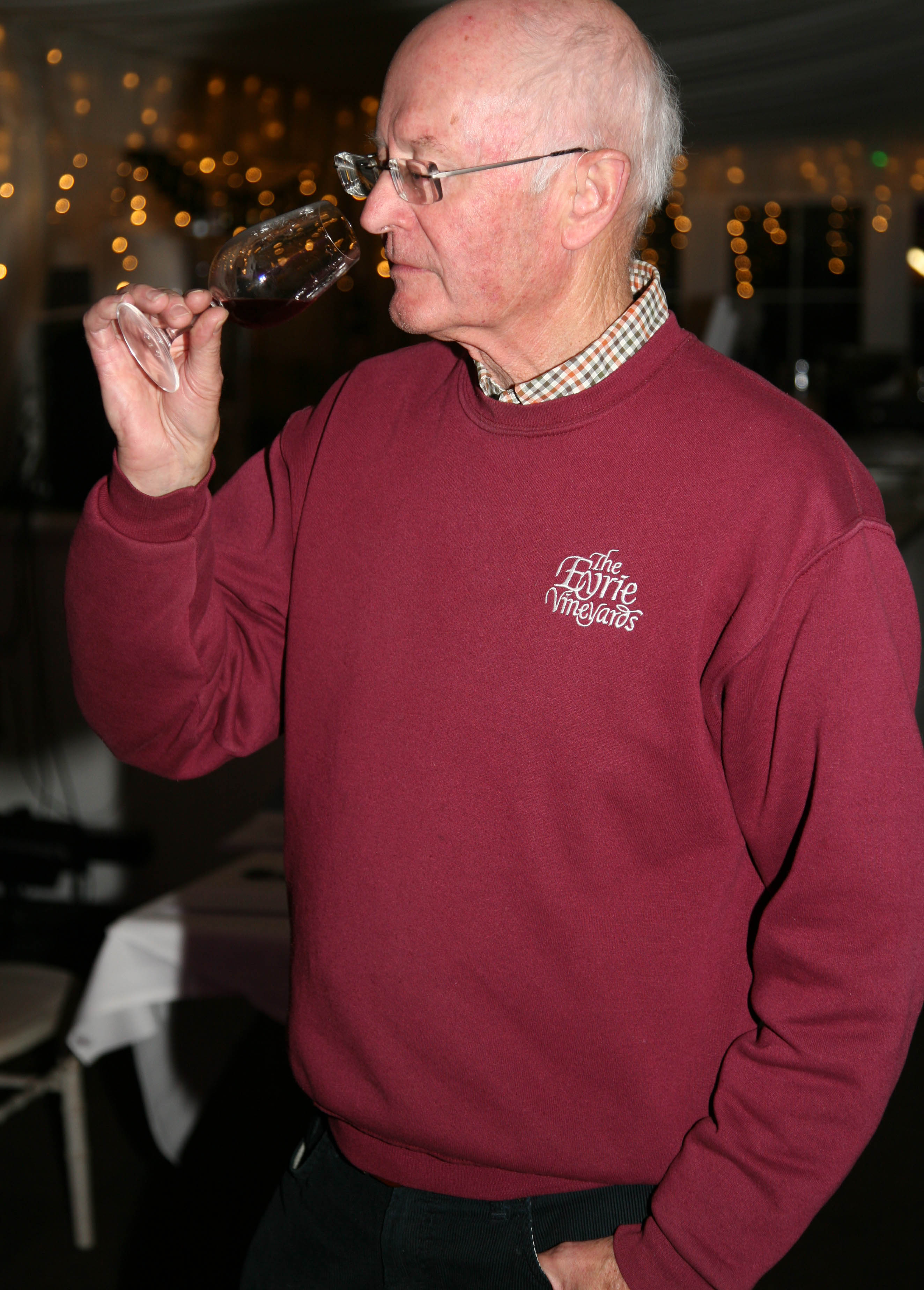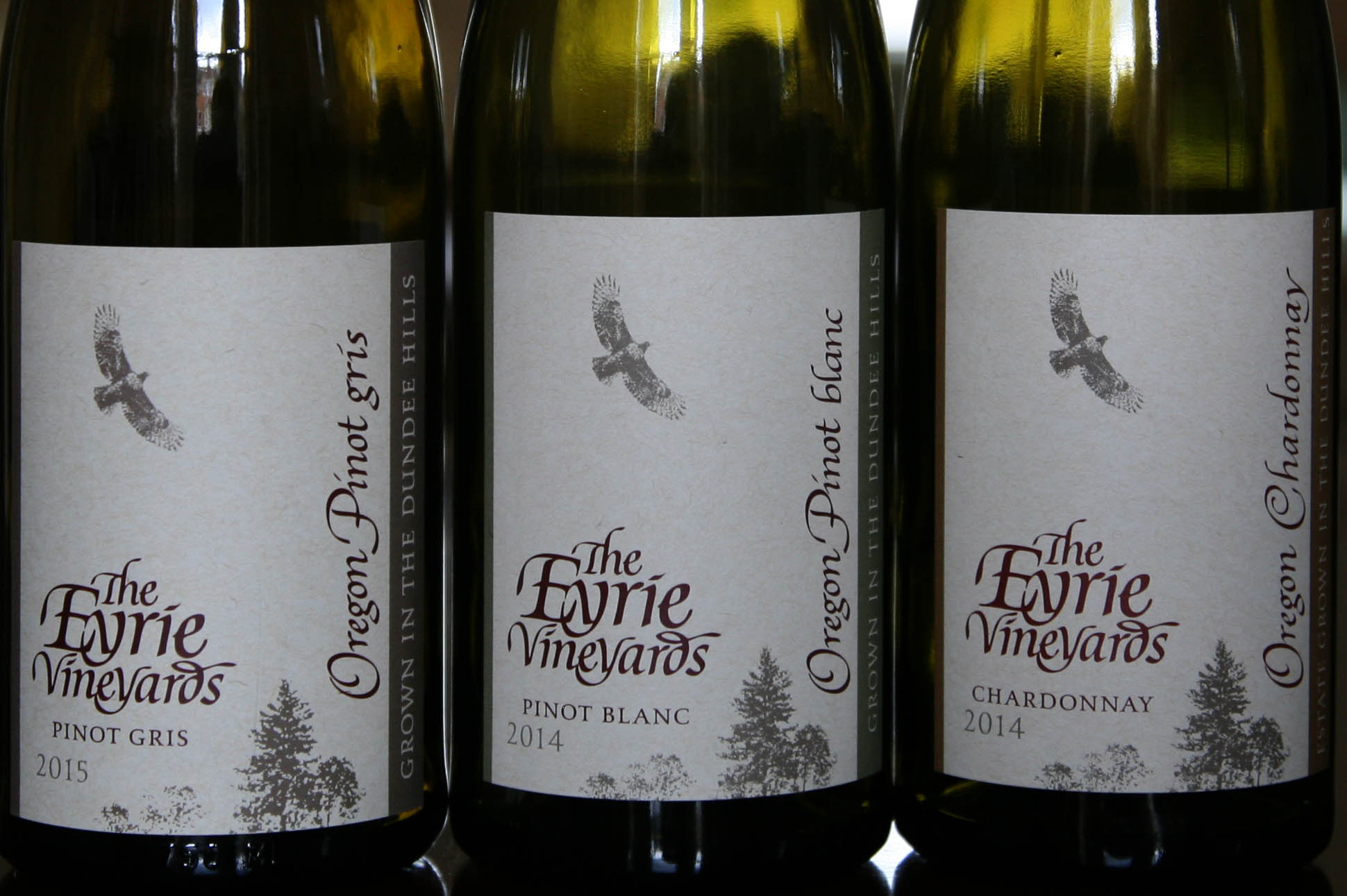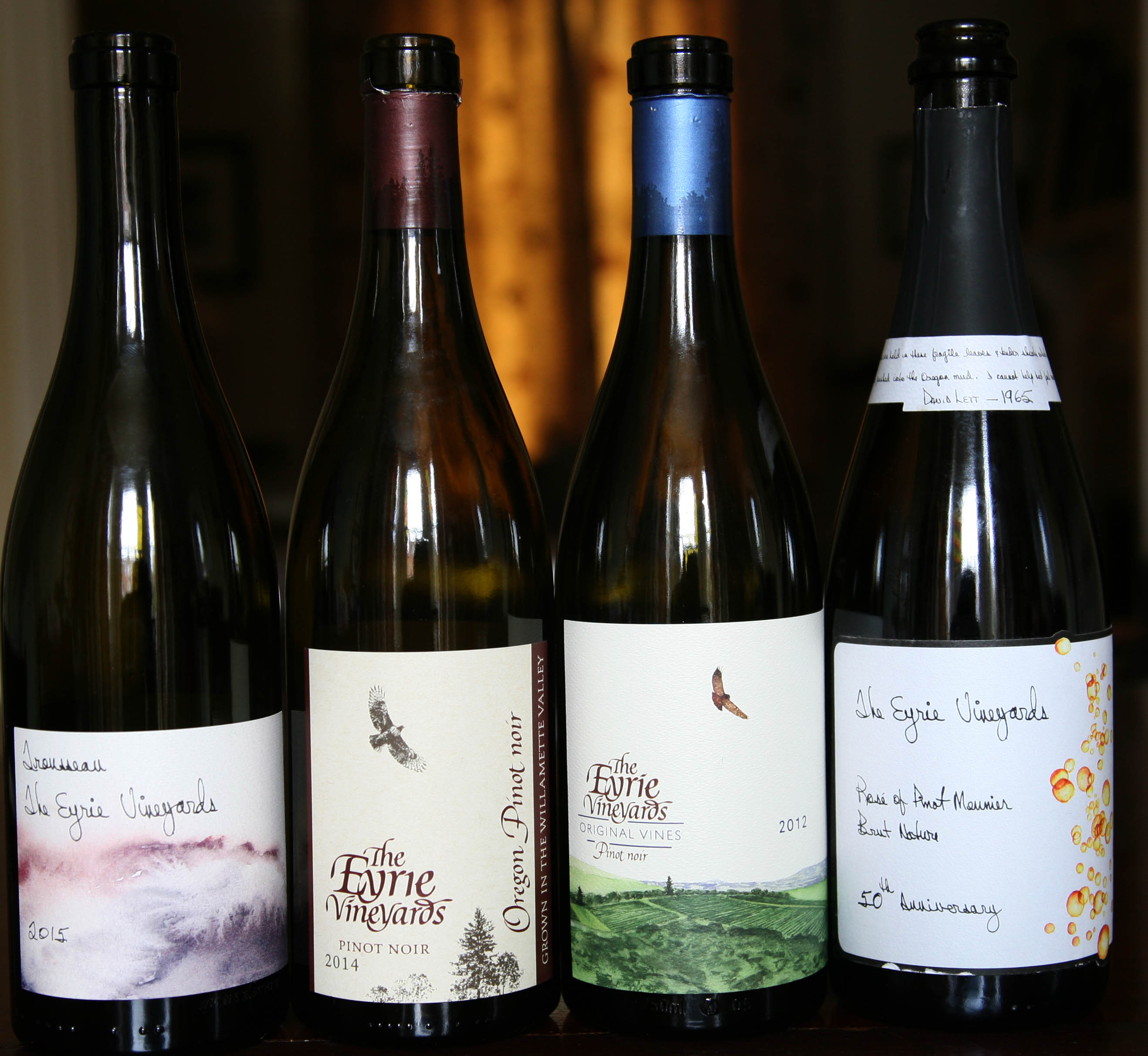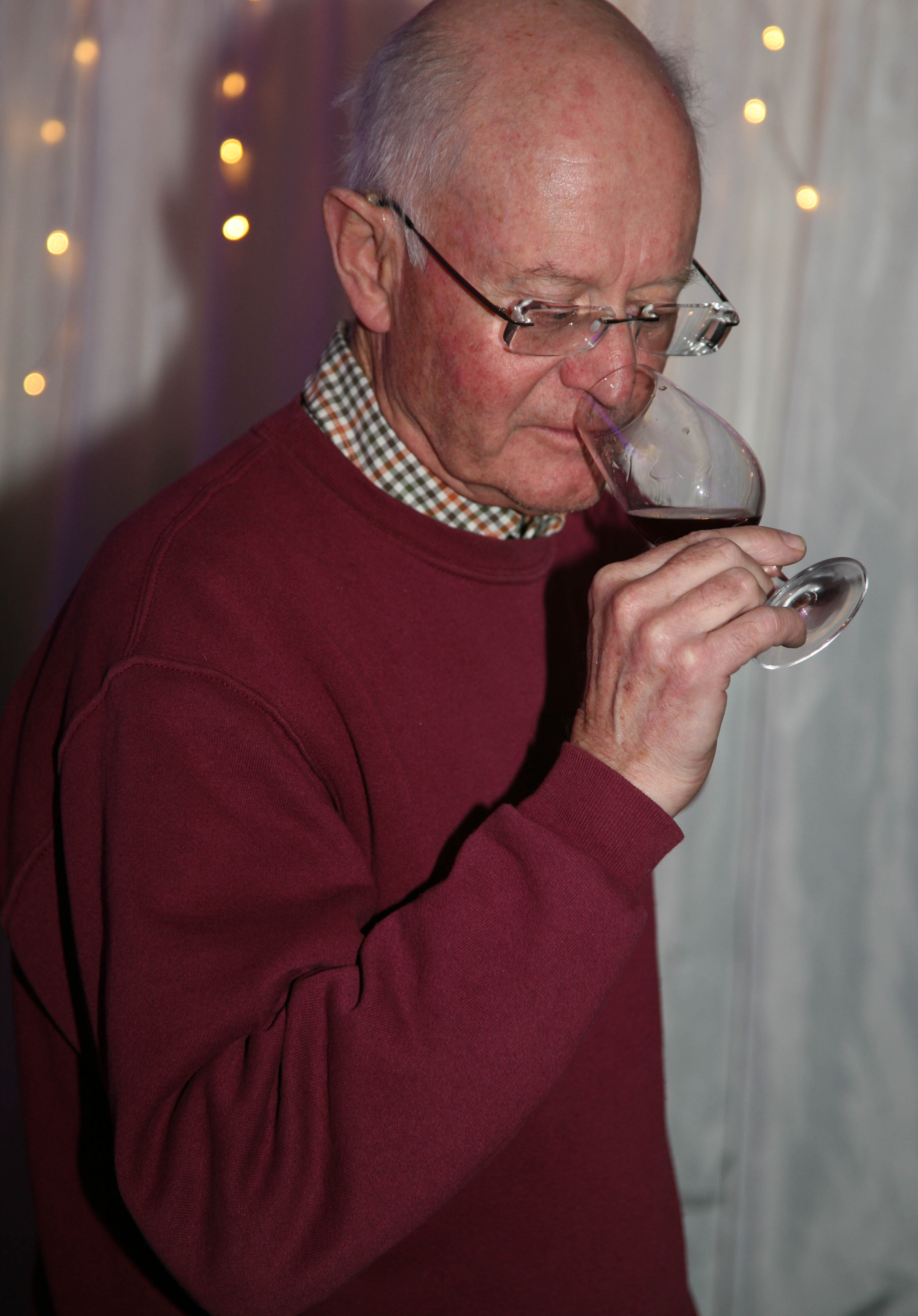 Mark Savage returned to the Club in March 2018 to present a tasting of the wines of the pioneer Oregon viticulturalist, David Lett. Lett founded the Eyrie Vineyard in 1965, which is now run by his son Jason. Mark has been closely involved with the vineyard and the Lett family for forty years, and indeed on David’s death persuaded Jason to ‘keep the faith’ and to ensure he embraced his father’s traditional methods, which indeed he has.
Mark Savage returned to the Club in March 2018 to present a tasting of the wines of the pioneer Oregon viticulturalist, David Lett. Lett founded the Eyrie Vineyard in 1965, which is now run by his son Jason. Mark has been closely involved with the vineyard and the Lett family for forty years, and indeed on David’s death persuaded Jason to ‘keep the faith’ and to ensure he embraced his father’s traditional methods, which indeed he has.
David Lett was a dental student in California when he first came into contact with the wine-making process. Jason claims that his father was hit by a ‘cosmic object, since once he’d seen the barrels being washed he knew without doubt what he wanted to do in life. He told his very disapproving father that he was quitting dental school and enrolling on the wine-making course at UC Davis. Throughout his life, this reticent but fiercely determined man focused on producing restrained, subtle, deeply structured, age-worthy wines. Starting with a mere 20 acres (the estate is now over 60), Letts sold his first (1970) bottling for an incredible $1.99 a bottle, because he was not satisfied with the standard he had achieved.
His model was the high altitude, marginal climate wines of Europe and this theory led him to Oregon where the latitude – the 45th parallel – is the same as that running between the northern and southern Rhone. The geology of the area is complex, with some volcanic soils intermingled with decomposed basaltic matter, a residue of the last ice age’s Missoula Floods. The Cascade range of mountains moderates the cool damp air from the Pacific and also blocks the arid desert winds from the west. Lett was the first to plant Pinot Gris in the New World and the first to plant Pinot Noir in the Willamette Valley, a true pioneer.
More than that, he set the model and the direction for the development of the Oregon wine industry. As Mark explained it, Oregon is the ‘antidote to California’ and David and the Eyrie Vineyard the reason why Oregon avoided the ‘Californication’ of the north-west wine industry. The Eyrie approach features unirrigated vines, low yields, natural wild yeasts, no acidification, no chaptalisation, minimal or no use of sulphur and no cellar temperature control. Barrels are used to refine wine through gentle oxidation rather than for flavour, with wines left on the lees for 21 months or more. Lett’s approach paid off - in 1975 his South Block Pinot Noir Reserve came second – by a whisker – to Chambolle-Musigny 1959 at the Wine Olympiad in France. So impressed was Robert Drouhin that he jumped on a plane and bought 90 acres close to David’s own original twenty acres at Eyrie. The Oregon wine industry nevertheless has grown slowly – it’s still no more 1-2% of Californian production (Robert Mondavi makes more wine in one plant than the entire Oregon industry) and Savage tells us there’s ‘less noise of money’ than elsewhere in the US. When Mark first visited in 1980 there were only a dozen or so growers; now there are over 700 primarily small producers.
The Eyrie vineyard is made up of several different plots with distinct terroirs and the Lett Family’s approach is almost entirely based on allowing this terroir to shine through each wine. Grapes are picked at optimum maturity – notoriously difficult with Pinot. Working in this way is risky and the risks can only be managed with constant care. In David’s view, 90% of the work was ‘gardening’, only 10% ‘cooking’. Jason takes a slightly more positive view of the ‘cooking’ but cellar work remains minimal and he believes that ripe fruit in good condition does not need ‘correcting’ by ‘control freak’ wine-makers. Indigenous wild yeasts are still used; there’s only a tiny proportion of new oak (perhaps a barrel or two purchased each year) and the constant aim is to make wine that reflects the terroir.
The result is wines that mature slowly, steadily increase in complexity and age beautifully for decades – Savage talked of some of the wines reaching their peak in 20 or 30 years time. They share a sense of restraint and delicacy, even in the very hot 2015 vintage, of which we tasted a couple of examples. The remaining five were from the 2014 vintage; still very young but clearly showing their potential.
 The first pair were the 2015 Pinot Gris and 2014 Pinot Blanc. Both wines had high acidity, restrained alcohol levels (13.5% and 12.7% respectively). Green apples, citrus and cucumber dominated the nose of the Pinot Gris while a hint of pear and even roast pineapple suggested richness to come. The Pinot Blanc had a stronger leesy flavour with baked pears, citrus and a suggestion of buttered toast.
The first pair were the 2015 Pinot Gris and 2014 Pinot Blanc. Both wines had high acidity, restrained alcohol levels (13.5% and 12.7% respectively). Green apples, citrus and cucumber dominated the nose of the Pinot Gris while a hint of pear and even roast pineapple suggested richness to come. The Pinot Blanc had a stronger leesy flavour with baked pears, citrus and a suggestion of buttered toast.
We followed with the 2014 Chardonnay. This wine is based on the Draper clone (originally from Burgundy) rather than the lower acid and more productive Davis clone 108 that dominates the Californian industry. Though barrel-fermented, this wine had none of the blowsiness of the stereotypical New World Chardonnays, but rather a refined creaminess that complements the pineapple fruit that emerged as the wine stood in the glass. Savage (who proudly does not own a Vacuvin) tells us there’s no real need to chill these wines – certainly not to ice them down – and all would evolve happily in the bottle over a two or three day period. For Mark, ‘concentration is the enemy of finesse’ and this certainly is the case in this beautifully made wine.
 The fourth wine was the 2015 Trousseau, a pale-coloured high-altitude grape, originally from Eastern France, though also found in Portugal. Mark introduced the Letts to Trousseau on a trip to the Jura and the Letts’ plantings are the first in the USA. On the nose, the sharp wild-berry fruit aromas are complemented by an almost floral perfume, whilst in the mouth, the red berry flavours are tempered by slightly musky/coffee-ish notes. Light, very drinkable and may well age – though it’s too early to be sure of that as yet.
The fourth wine was the 2015 Trousseau, a pale-coloured high-altitude grape, originally from Eastern France, though also found in Portugal. Mark introduced the Letts to Trousseau on a trip to the Jura and the Letts’ plantings are the first in the USA. On the nose, the sharp wild-berry fruit aromas are complemented by an almost floral perfume, whilst in the mouth, the red berry flavours are tempered by slightly musky/coffee-ish notes. Light, very drinkable and may well age – though it’s too early to be sure of that as yet.
The final two still wines were both Pinot Noirs. Both were from 2014, but differentiated by their origin in different plots on the vineyard. The ‘Original Vines’ wine is just that – from David Lett’s first plantings, now fifty years old; it now takes three vines to make a bottle rather than the single vine / single bottle equation of productive vines but what wines those few grapes make. Black rather than red fruit dominated but with a wide range of secondary aromas of coffee grounds, butterscotch, aromatic wood and liquorice.

The Letts’ standard wine, sold as Wiliamette Valley, is mainly from newer Eyrie plantings but may include some non-estate grapes. The basic flavour profile is similar but less complex and, after a piercing nose, the flavours are as yet less complex but the perfect balance, the absence of new oak, and its sheer vitality make a winning combination.
We ended the tasting with a true one-off, the sparkling Pinot Meunier made to celebrate the 50th anniversary of the vineyard’s founding in 1965. The colour, said one member, was of ‘chiffon silk’, the wine having red berry aromas and an appealing touch of salinity.
An intriguing way to end a remarkable tasting. Mark has kindly offered members a mixed case of a dozen wines (two each of the first three, and six of the Pinot Noir) for £250. The problem will be to refrain from drinking too young but it will be fascinating to see how they evolve with time.
Mark’s intimate connection with Eyrie strongly suggests (though he would be too modest to say so) that he can take a share of the credit for the long-term development and direction of the Oregon industry. This tasting was a privilege.
GH/HRE: 28/3/18